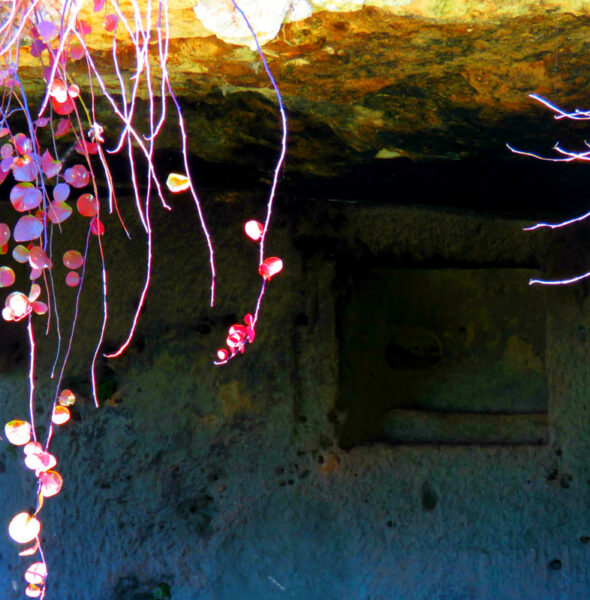Have you ever gone stargazing on top of a mountain, to find those perfect conditions of visual clarity? If you have done it at least once, perhaps you are fond of astronomy. And if you are, you should become familiar with a relatively new and very exciting discipline: ARCHAEO-astronomy. If you live in areas that have been populated for millennia, you will find many places where astronomy is intertwined with archaeology. Sicily, and Mount Etna, are among these.
Learn about Archaeoastronomy
The official definitions of Archaeoastronomy say that (source Wikipedia): it is a discipline that uses a variety of methods to find evidence of past practices, including archaeology, anthropology, astronomy, history, statistics and probability calculations. (…) Archaeoastronomy also contemplates complementary niches within landscape archeology and cognitive archaeology. The material evidence taken and its connection to the sky can reveal how a larger landscape can be integrated into pagan beliefs about the cycles of nature.
That is to say, this discipline searches for “sky messages” related to the position and light of the stars, sun and moon, in human buildings. Or in those places where the shapes of mountains, rocks or particular trees allow us to connect human spirituality to the study of the cosmos. To give practical examples: the rocks of Stonehenge, in the United Kingdom, are an example of an archaeoastronomy site; so are the pyramids in Egypt; the Mayan pyramids in South America; the underground burials of Newgrange in Ireland; many ancient sundials can equally be defined as works of archaeoastronomy.
There are caves with holes or openings dug following the position of the sun, so to ensure that that specific ray at that specific time of the year illuminates a symbol. There are buildings arranged on the ground so to reflect the position of constellations in the sky. The charm of this brand new science is also found in many places in Sicily. And on Mount Etna.
 Detail of a cave-house in Pantalica
Detail of a cave-house in Pantalica
Archaeoastronomy in Sicily
Sicily boasts numerous sites that can be connected to Archaeoastronomy, both as human artefacts and natural sites. For example, the Argimusco plain – with its rocks sculpted by the wind as zoomorphic shapes – is an interesting archaeoastronomy site. The houses and tombs of Pantalica are also a site that is of interest to this matter. Archaeoastronomy can also be done on the island of Mozia, among the temples of the Valley of the Temples of Agrigento, at the Rocca di Cefalù, at Rocca Novara, in the ancient palmenti (wine cellars) of the Alcantara Valley and in the surroundings of the great Etna volcano.
On Etna, in particular, research is still ongoing. Several sites that could fall within the discipline are being studied, while many others have been identified already, in the immediate surroundings of the volcano. In particular, we are talking about Balze Soprane (Bronte), Rocca Pizzicata (Roccella Valdemone), Thapsos (Priolo Gargallo), Grotticella Tombs of the Alcantara Valley.
Archaeoastronomical itinerary on Etna
If you are interested in this fascinating journey, here is what you can admire if you do Archaeoastronomy on Etna and its surroundings.
At Balze Soprane, not far from Bronte, you will find a series of stone slabs – ten in total – which were part of a double-circle structure interspersed with a circular corridor. It could be an ancient temple or a Neolithic tomb, arranged according to the position of the stars in the sky or following the direction of sunlight in certain seasons.
The Grotticella Tombs of the Alcantara Valley are somewhat scattered along the path of the famous river. The most beautiful ones to see are located at the castle of Lauria, in Castiglione di Sicilia. They are not carved in the main body of the castle itself, but in the rocky hill on top of which it is built. Between Mojo Alcantara and Roccella there is an old ancient wine cellar which houses cave tombs probably dating back to the Bronze Age, as well as wine tanks discovered nearby as evidence of the millenia-old tradition of winemaking in Sicily.
Moving away a little further from the volcano, you can visit Rocca Pizzicata, where the remains of tombs and houses appear arranged in an order that recalls very specific constellations. To the south, in the territory of Priolo, there is this small island just off the coast where there are numerous prehistoric remains and necropolises from the Bronze Age period. These remains are also known as Thapsos Culture. (ALL PHOTOS ARE BY GRAZIA MUSUMECI)